From Explore Magazine, Spring, 2011
Monday, August 1, 2011
Charles Wilkins tackles the Atlantic
A momentous trip. Thunder Bay's Charles Wilkins rows across the Atlantic as one of the crew of the Big Blue, a boat built for the trip. And he lives to tell a tale that is harrowing, cringe inducing and of course, being Wilkins, funny as hell. Read on....
The Big Blue
By Charles Wilkins
From Explore Magazine, Spring, 2011
From Explore Magazine, Spring, 2011
It was to be an expedition like no other—a run across the Atlantic from Morocco to Barbados U.S. college rowing, a number of triathletes and a woman who had rowed both the Atlantic and Indian oceans. There would be no support vessel, no stored water, no sails or motor.
Because the boat was the first of its kind, there would be no safety certificate or assurances.
The venture, to be sure, was no laughing matter.
Well, unless you consider that one of the crew members was a scrawny and bespectacled sexagenarian, the pinnacle of whose sporting career had been a season of hockey with the Forward Pharisees of the old Toronto Church League. This notable human blight on an otherwise durable roster had, until recently, never swung an oar in earnest or even sat on a proper rowing seat—indeed, did not know the names of even the commonest parts on a competitive rowing vessel. It is worthy of Mrs. Malaprop that, on training manoeuvres, when a reference was made to “the riggers” (the mechanisms that hold the oars in place), the tyro in question assumed it was the rigours of the anticipated crossing that were under discussion.
I am speaking of course of myself, C.E. Wilkins, galactic expeditionist, and must reluctantly report that when I stepped on deck during the earliest hours of the voyage I was told by one of our toughest rowers, Ryan Worth of the University of Tennessee, that I looked as if I were on my way to the library.
I suffered but did not protest the appraisal, and a mere eight hours later, as I came off the midnight watch, had a chance to reassess it with a vengeance. For at that point I would have traded the last shreds of my dignity to have indeed been on my way to the library—to have been anywhere on earth other than where I was. If I could claim one rueful victory as I settled to my bunk, it was that I no longer looked like a guy approaching a library. For one thing, every item of clothing on my carcass was oozing sea water. My hair was the crusted amassment of brine and microorganisms that it would remain for days, and the palms of my hands were a bleached mess of tortured skin and broken blisters.
I was cold, I was exhausted, I was starved (dinner, many hours earlier, had been a bowl of partially rehydrated macaroni topped with powdered key lime pie). What’s more, I had been beaten up—slapped around by waves that sometime before midnight had started coming hard out of the east onto our port flank. Many of them had broken over the gunnels into our laps, onto our chests, into our faces. At one point, when for the briefest of moments my focus had lapsed (my brain having detoured into fantasies of my former life as a human being), an uncooperative wave had snatched my oar, driving the handle into my chest, pinning me with savage efficiency against the bulkhead that defined the prow end of the rowing trench. My right ear had taken so much salt water that it had effectively gone deaf.
If I was lucky, I had 90 minutes to sleep before being jarred awake for my next two-hour stint on the oars.
But first I had something to attend to in the darkness of the cabin—and must at this point grant a moment’s leave to anyone of a delicate nature. For we must discuss a part of my anatomy typically off limits to non-professionals or to those whose house key does not match my own. By which I am referring to my ass. To what was left of my ass.
My problem astern had begun earlier that evening, barely out of our starting port of Agadir
Now, in the darkness, tummy down in the bunk, I raised my hips a few inches and eased my gauge-3 hi-tech rain pants onto my thighs. With the help of my teeth and lips, I pried open a tin of Penaten Medicated Cream and, working blind, pressed great gobs of the sweet-smelling emolument onto the weeping sores, one of them as big as a Ritz cracker, that had been grated into my backside by the rowing seat.
From Day Two forward, my seat cushion, a vital piece of gear for any ocean rower hoping to stay functional and sane, was a couple of book-sized slabs of cheap foam, bound roughly together with duct tape. But on that first night out, I was forced to suffer three harrowing watches either with no cushion at all or with borrowed cushions that did not do the job for me.
If I had any reason to feel positive as I lay in my soaked garments—or at least to feel less negative—it was that I was considerably better off than a couple of my cabin mates. One of them, a dazzling young musician named Dylan White, from Guelph Toronto Island , who at 67 hoped to become the oldest man to row the Atlantic , had contracted severe gastro-intestinal poisoning in Agadir. For now, he could do little more than lurch back and forth between his bunk and the alfresco toilet within sniffing distance of the port stroke seat—or lie gazing at the cabin ceiling hoping that somehow it would all go away. Which, with the help of medication, it eventually did.
Had it not, and had Tom croaked aboard, he would, like any other crew member post mortem, have been accorded what a prospectus for the trip had called “immediate burial at sea”—preferable, one assumes, to less timely options.
“How ya doin?” I said to him quietly when I had reinstalled my sea-soaked, and now frigid, pants.
“Not good,” he whispered.
“Ya gonna make it?”
After a lengthy pause, he said, “I dunno—at least it’s calming down out there.”
Two seconds later, as if cued to his utterance, a 20-foot wave exploded over the bridge, astern, and sloshed through the cabin door, which we had not yet learned to keep closed. When the shrieking had died down and people had rescued their skivvies from the cabin floor, Tom looked across at me and said, “I still dunno.” And in self-mocking insolence—the last luxury available to us under the circumstances—we began to laugh.
If further evidence is necessary of either the mirth or sobriety of this fateful expedition, consider that, like the rest of the crew, I had by the time we cast off invested US $10,000 in the boat. Consider, what’s more, that, having begged my way aboard as a chronicler of the follies to come, I had spent a year and a half in back-busting training in order to be ready. This grossly protracted fitness spree consumed at its peak some 25 hours a week and at times left me so exhausted that toward the end of it I began seriously to wonder if I had the jam to go out there and do what dozens of far stronger athletes had failed to do in the past. When my confidence showed signs of resurgence, I needed only remind myself that of the 700-odd fools who had attempted to row the Atlantic during the past hundred years, a mere 400 had made it—compared, say, to the roughly 4,000 who have reached the summit of Everest.
At the same time, gentle reader, there is a part of me that is harder to crush than a cockroach—a part that actually looked forward to the perilous conditions, the salt drenchings, the 12-hour days in the rowing pits.
When we weren’t rowing, we lived like gophers in a cabin about the size of a Volkswagen van. It was a cell that, for reasons easily imagined, I often thought of as the Gas Chamber—or, in airier moments, the House that Dave Built: eight bunks, each about the dimensions of a pygmy’s coffin, with a narrow central passageway and a Lilliputian galley.
By Dave I mean David Davlianidze, the Georgian expat in whose Long Island boat shop our eccentric craft took shape. It verges on myth that in the days after Georgia gained its independence from the Soviet Union in 1992 and was plunged into civil war, this gentle, free-spirited economist carried a Smith & Wesson .38 revolver and ran with other gun-toting “paramilitarists” in order to guard the money he was making by importing cigarettes from Austria and selling them out of what he refers to as his “boutique” in the Georgian capital of Tbilisi. But to the crew he was all hero, in that when the expedition began to founder in late 2009, he committed everything he had in energy, finances and faith to the construction and safety of the boat.
In December of 2010, he took the vessel apart, crated it up, and shipped it to Morocco
Optimism ran high— let us say, ran medium. If there was a dark note, it was that Ovide, a naval architect at the boatyard, was decidedly non-committal in assessing Big Blue’s seaworthiness. When asked, as he was several times, he would roll his eyes and shake his presumably knowledgeable head.
The question was: Would the boat hold up on the Atlantic ? Would the aluminum beams connecting the hulls be strong enough? Would the thing surf, as any rowboat riding the trade winds has to do?
In effect, we were test pilots for a boat that might at best turn out to be a one-crossing wonder, or might survive to become a model for the future of the sport.
The voyage began officially 400 kilometres south of Agadir in the Saharan port village of Tarfaya
Then it turned.
Then waffled.
Then turned again with a ruthlessness. On Day 18, having properly come into the trade winds, we covered 102 miles, driven by waves that at times foamed to our throats. From that point, for 15 days straight, we were pushed—and pushed around—by winds as high as 50 kilometres per hour and by rollers the height of houses. It wasn’t uncommon for a wave to roll right over us in the trenches or come up under the cabin with such force that, from inside, it sounded as if a bomb had been detonated on deck.
Some nights were too wild for rowing at all, and we either doubled up in our bunks, like strands of DNA, or we shivered on deck, or scrunched ourselves into the storage holds in the prow of either hull. There, belowdecks, the darkness was absolute, the air stifling, and the crashing and bouncing of the waves could bring on nightmares about the boat breaking up while you were more or less trapped in the hull. One night in the starboard hold, as I crouched, sweating, with my head between my knees, I was transported rather suddenly to a forgotten childhood dread that I would get imprisoned by bad guys in a space that was too small to allow me to move, and would be left there to suffocate. I emerged into the moonlight and, in my haste to get free of the hatch, tripped and tumbled into the rowing trench. Before I could catch myself I had barked my shin so severely that to prevent myself from screaming as I peered through the torn flesh at the bone, I settled onto the rowing seat and dissolved into a kind of giggling rapture of pain.
For the most part we wore safety lines clipped to various parts of the boat. When the seas were roughest, we wore life preservers. But the precautions weren’t “bombproof,” as the saying goes, and on perhaps the 20th day out, after a review of our rather paltry “man overboard” procedures, it struck me with considerable force that if you went into the drink, you were probably gone for good. In the heaviest seas, there wasn’t even a remote possibility of turning Big Blue around, of rowing back upwind into the waves to affect a rescue.
The boat itself was an ongoing vulnerability. About three weeks into the crossing, two rather ominous-looking cracks opened in the front lower edge of the cabin, within plain view of my rowing seat. For a day or more, I watched with spectral fascination as these ever-expanding lesions opened and closed like crudely animated mouths. At about the same time, a clunking developed where the 10-inch carriage bolts joined the cabin to the frame. Upon examination, both problems were deemed “non-structural” (as indeed were the first fractured hull plates on the Titanic).
Meanwhile, would the desalinators hold up? Would the plastic hatch covers and bilge pump (the latter little more than a toy) be sufficient to keep the sea out of the hulls?
If all else held, there was the less dramatic risk that our food would run out as our anticipated month-long journey stretched into overtime. Which might well have happened had it not been for our oft-inscrutable commander, Angela Madsen (ex-Marine cop, California surfer, Paralympian), a woman whose administrative chops centred less on leadership by the old naval verities than on what I came to think of as “feedership”—leadership by food. Originally, we were to have taken care of our own lunches and dinners. But when Angela injured her back and was reduced to rowing for just an hour or so a day, she devoted herself, with no small commitment, to making the meals, fussing them into being, serving them to us in our bunks, washing the dishes, and cleaning up our messes.
Under the assumption that we would only be out there for 30 to 35 days, I myself had embarked somewhat under-provisioned. In the spirit of the quest, I had also been determined to travel light. During the latter stages of the trip, I nourished myself largely on Squeezers Cheese, little plastic packets of orange mud, cleverly disguised as cheddar, that had been abandoned in heaps by the others. These were supplemented by gift rations, most memorably from my cabin buddy Tom Butscher and my old friend Steve Roedde, an Ontario
Like the physical challenges, the cabin politics could be grating and unpredictable—and also at times quite wonderful, as the collective or private debate crashed back and forth between appalling pettiness and the heights of generosity.
I was by no means immune. On the 29th day, for example, somewhere out over the Mid-Atlantic Ridge, I grew impatient with my bunkmate and was preparing to “speak to him” about the way he’d been “advising” me, relentlessly it seemed, on the state of our shared quarters. “Charles,” he’d say quietly when he saw me coming on or off watch, “—about the bunk.” Surely, I could dry my sleeping bag a little better, pick up the peanuts that someone had spilled on the adjoining floor. Had I seen his lost sweatshirt? Was the food wrapper beside the bunk mine?
As a matter of fact, no, no I hadn’t, and no it wasn’t (or maybe it was). I like Sylvain a lot—in fact love the guy; he is an intelligent and philosophic emergency-room doctor from Hull , Quebec
Nevertheless, that night, at 4 a.m., as he came on deck to relieve me in the rowing trenches, I crouched beside him as he lowered himself onto the seat. I was about to start bellyaching when it occurred to me that by pressing my own narrow perspective, I was merely perpetuating the sort of grievances that had too often gotten out of hand during our weeks aboard. As if cued to my micro-satori, Sylvain, rather than addressing cabin issues as he had become apt to do, asked a simple question about the night sky. Immediately, I began describing to him what little I knew of the star Polaris, the North Star, the seaman’s navigation point, which at that moment was visible off to our left amidst an avalanche of constellations cascading into the sea. Our conversation led into poetry and philosophy, eventually to Galileo and then on to Descartes and the Age of Enlightenment.
For half an hour, or so, we enjoyed our own little enlightenment, and in this way were able to reroute our frustrations and, in a broader sense, to thrive and survive amidst the ongoing chaos of the voyage.
I should add that a few days later when I was hungry and every bit of my clothing was soaked with sea water, Sylvain, having assessed my situation, hauled out his special fine-wool pullover, explaining to me that it had something akin to special powers and that if I put it on in the bunk that night, my entire mood and perspective would be elevated in its warmth. He said he himself liked to put it on when he needed a boost. So, I did—donned the thing after the 2 a.m. watch and crawled in under the blanket I had borrowed to replace my wet sleeping bag. And indeed felt better—felt good—partly because of the garment, no doubt, but also in the glow of my bunkmate’s care and concern.
My spirits were buoyed at other times by the unsinkable Louise Graff, a 48-year-old Kentuckian who grew up on a horse farm and now lives in the coastal city of Charleston
Moreover, she had that rarest of gifts, the ability, under stress, to keep her pain and problems to herself. I never once heard her complain about her salt sores, or about the bruises she’d picked up when the breakers knocked her from her rowing seat, or when an unruly wave caught her oar, sending its handle like a baseball bat into her shins or midsection or chest.
It was Louise who taught the girls how to pee without getting out of the rowing trench; Louise who provided sunscreen and soap when the rest of us had run out; Louise, who when her wet-wipes were gone (which is to say her toilet wipes), rather than begging, as most of us had begged from her, simply ripped her cotton jacket into squares and carried on.
One afternoon when the sea was in chaos, the boat groaning, Louise staggered into the cabin, ashen after two hours of dangerous and difficult rowing, but with a teensy mischievous smirk on her face. This was at a time when 25-cent packages of ramen noodles had assumed a boat value of about a hundred times retail. “Anybody with noodles need a blow-job?” she said solemnly, throwing the surly caboodle of us into a gut laugh of the sort that helped keep us from going nuts.
Amidst all this discomfort and exhaustion—and bad food and compromised ideals and doubts about one’s stamina—there was a magnificence to the journey that is barely transportable into words. There were afternoons in the trenches, with the sun blazing, the boat rising and falling like an elevator, the petrels diving, the flying fish soaring in platoons—afternoons when I fell to dreaming, rowing and dreaming, convinced that I had never been happier and never would be, and that I never wanted this inspired and inspiring trip to end.
Sometimes I would quit rowing entirely and would simply lie back and gaze at the sky. Or I would get up out of my rowing seat at dawn, so as to better witness the sunrise. Or would wait with my camera for the dolphins or whales, or for the occasional tuna or shark. Or in the wee hours, in the rain, would turn my tiny flashlight on the silvery dorado that were invariably ghosting along beside the boat.
At times, I tried to persuade the younger crew members to abandon their iPods in favour of paying attention to the sea. I have read that in the absence of electronic distraction, which tends to do our inner living for us, our imaginations begin to breathe, to connect with parts of ourselves that are an ancient coefficient of the wind and waves.
As for the stars, one’s connection to them on a dark night on the Atlantic is as alluring and uncontaminated as it must have been for the Phoenicians and Egyptians of antiquity. I was impressed equally by the sunsets and cloud formations, the power of the swells, and by our immersion, day and night, in what I have come to think of as a sort of wild ecological opera, replete with mysteries and mercies and melodrama.
How dazzling and unforgettable it all was to experience the Atlantic in this way, right up close, literally at sea level, day after day! So much of the planet is ocean, and yet I had known so little about the power and reality of it—or about my own intangible connections, some of them evolutionary, to the rhythms and draw of the sea.
In gloomier moments, I often found myself thinking about what lay below: mountains, valleys, impenetrable pressures and darkness; blind sea creatures so far down that they breathe sulphur gasses instead of oxygen; drowned seamen and the ships that took them to the bottom. Such vessels are down there by the hundreds—in fact are concentrated on the very route we travelled, a kind of sailing lane followed for centuries by the likes of Columbus, Vespucci, da Gama, Cortés, Pizarro—and later Darwin and Maury—as well as by thousands of now-forgotten trading, passenger and naval vessels, many of which went to the bottom.
I perhaps risk a presumption in claiming that my own crossing gave me a better understanding of what the first sailors faced as they headed out across the Atlantic . Many of them never made it. Or arrived sick or with a leg amputated, or having been beaten for insubordination, or tortured by pirates.
By the time our own voyage ended, 53 days after it began, I too was a wreck, down nearly 30 pounds from my skeletal norm. I had broken a pair of teeth on the rock-hard inedibles en route, and had lost strength to a degree that as I moved about the boat, I had to secure myself for fear that my legs would not do for me what they had been perfectly capable of doing when we set off. My exhaustion was such that, on night 51, during the 2 a.m. watch, I fell asleep on the rowing seat, waking only as my face crashed into the gunnel, which ripped several inches of skin off my left temple. There are photos of me during those last days that I refuse to circulate, having heard enough people joke that, compared to most corpses they had seen, I looked great.
Big Blue, too, was suffering. Apart from the cabin cracks, the wind-powered generators had quit, the paint was peeling and several of the sliding seats had broken down. The holds were full of garbage.
I could go on. However, as an antidote to this rather despairing denouement, I would prefer to mention that, not long ago, on a popular boating website, our beloved rowboat was said to resemble some elaborate, whimsical Lego construction.
In elucidating our peculiarities, the site compared Big Blue to the rowboat Hallin, a sleek three-seater that crossed the Atlantic more or less when we did, but with a stronger and more experienced crew.
The item was accompanied by a pair of video links, one showing Hallin’s “fit and serious” crew, the other offered as evidence of the “interesting” nature of Big Blue’s crew—to wit, a six-minute film featuring my personal and implausible self. Imagine my joy in discovering that I was no longer merely a misfit on his way to the library, but had become a poster boy for all that is unlikely about an unlikely sport that seduces normalish human beings into rowing across oceans!
I hasten to add that Hallin’s crossing of the Atlantic happened in a world-record 31 days, 23 hours—a record broken a day later by the boat Sarah G, another three-seater, which crossed in 31 days, 13 hours.
Our own somewhat inflated ambition to set a record ended not so much in ignominy as in a welter of realizations and acceptances—of the fact, for example, that the boat, with its all but crushing tonnage of provisions and equipment, was far heavier than anticipated and didn’t surf as we’d hoped; and of the vagaries of the Atlantic winds and weather.
I wish I could say it was about the leavening of the chi or the exfoliation of the self, or some such. But I went for a reason infinitely more profound: because I wanted to—which invariably takes in all the other good reasons one might have for going on an adventure.
Another question I get asked is: What did you learn?
This one I have come to loathe, in that it invites a cliché—or, worse, a shovel. Invites “overmeditation,” as one wiseacre put it. It implies, moreover, that what is learned on a journey can be reduced to a phrase or aphorism and dispensed like a dollar-store trinket.
Where lessons are concerned, I prefer a story. I have many. One of the briefest is about the crew member who, when we first spotted Barbados
But when I saw that crew member a month later and asked how he’d adjusted to being back, he said, “I haven’t. Too much of me is still out there.”
A part of me, too, is still out there. And I suspect will be out there for a long time.
The other question I get asked is: Would you go again?
And the answer is simple: For now I don’t have to.
But I’ll think about it when I get back.
Onlookers Cheer as Big Blue Arrives
.
Subscribe to:
Post Comments (Atom)




















































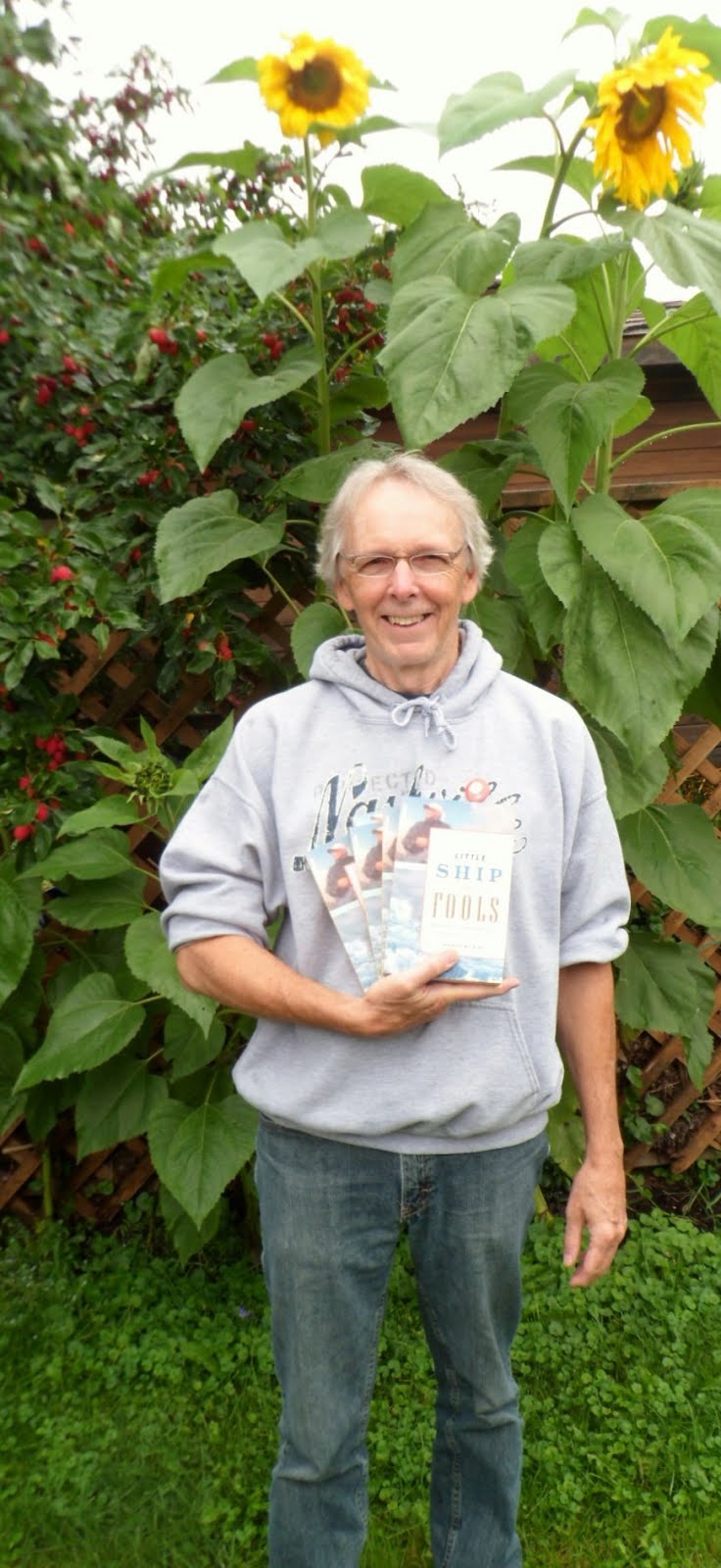
































































































































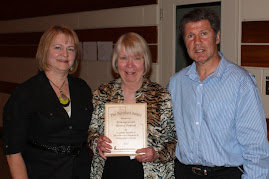














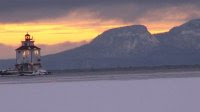

















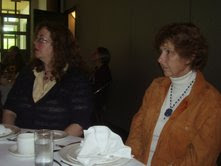



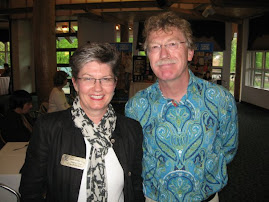







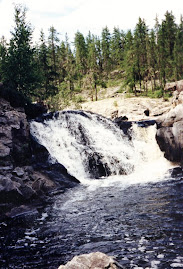








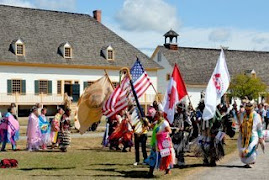
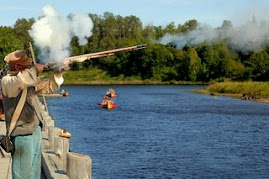
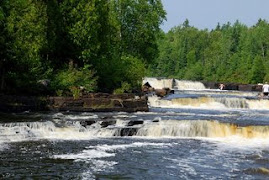


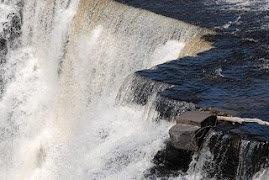
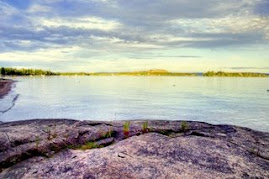

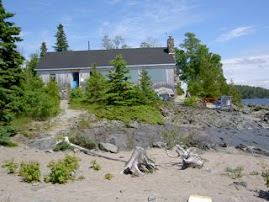
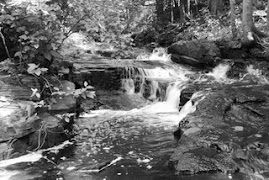

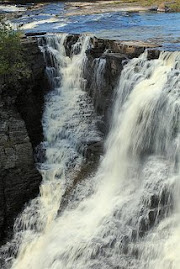
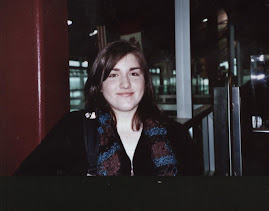
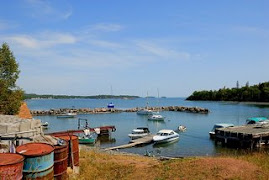


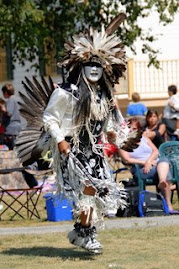
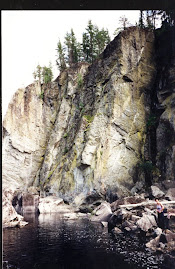

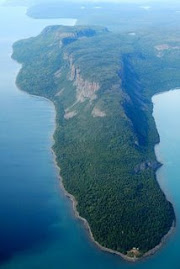
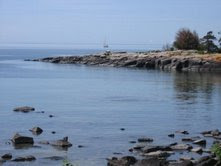

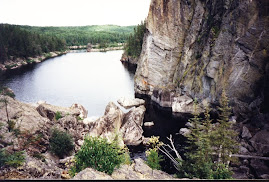

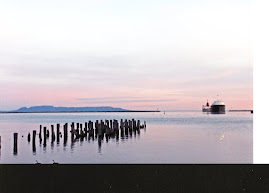





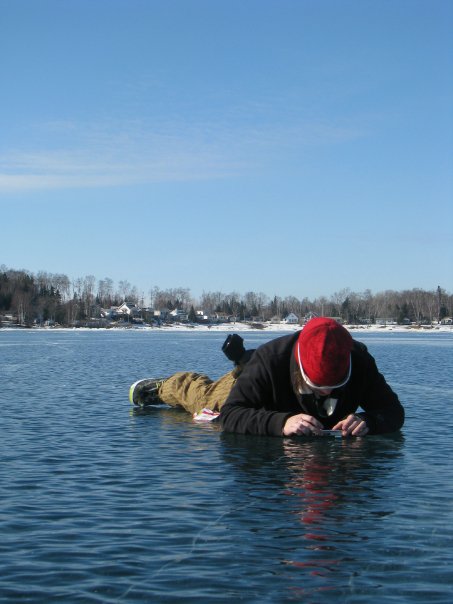

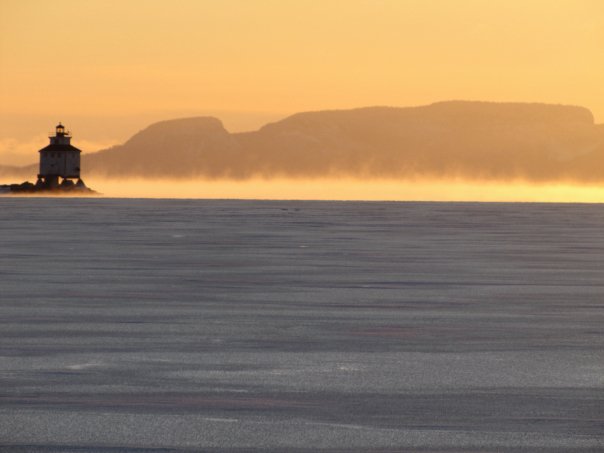

No comments:
Post a Comment